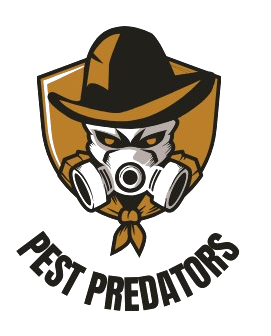When you hear "pest control," what comes to mind? For many, it’s the image of someone spraying chemicals around the house. But in reality, modern professional pest control is far more sophisticated. Think of it less as a one-off attack and more like a long-term security strategy for your property.
What Are Professional Pest Control Services?
At the heart of any good pest management plan is a framework called Integrated Pest Management (IPM). This isn't just about killing pests; it's a smart, holistic approach that prioritises sustainable, long-term solutions. A technician using IPM doesn't just treat the obvious problem—they get to the root of why pests are there in the first place.
The Limits of DIY Approaches
Grabbing a can of bug spray for a few ants marching across the kitchen counter might feel like a quick win. But it rarely solves a hidden or persistent infestation. DIY methods often fall short because they don’t address the core issues, like how pests are getting in or where they’re breeding. This often leads to a frustrating cycle where the problem keeps coming back.
There’s also a safety risk. Using over-the-counter products incorrectly can be hazardous for your family and pets. Professionals are trained to use the right treatments safely and effectively, targeting the problem with precision while minimising any potential harm.
"A professional pest technician does more than just eliminate existing pests; they act as a detective, identifying potential vulnerabilities in your property and creating a defensive barrier to prevent future invasions."
The infographic below really highlights the differences in effectiveness, cost, and time between tackling it yourself and calling in the experts.
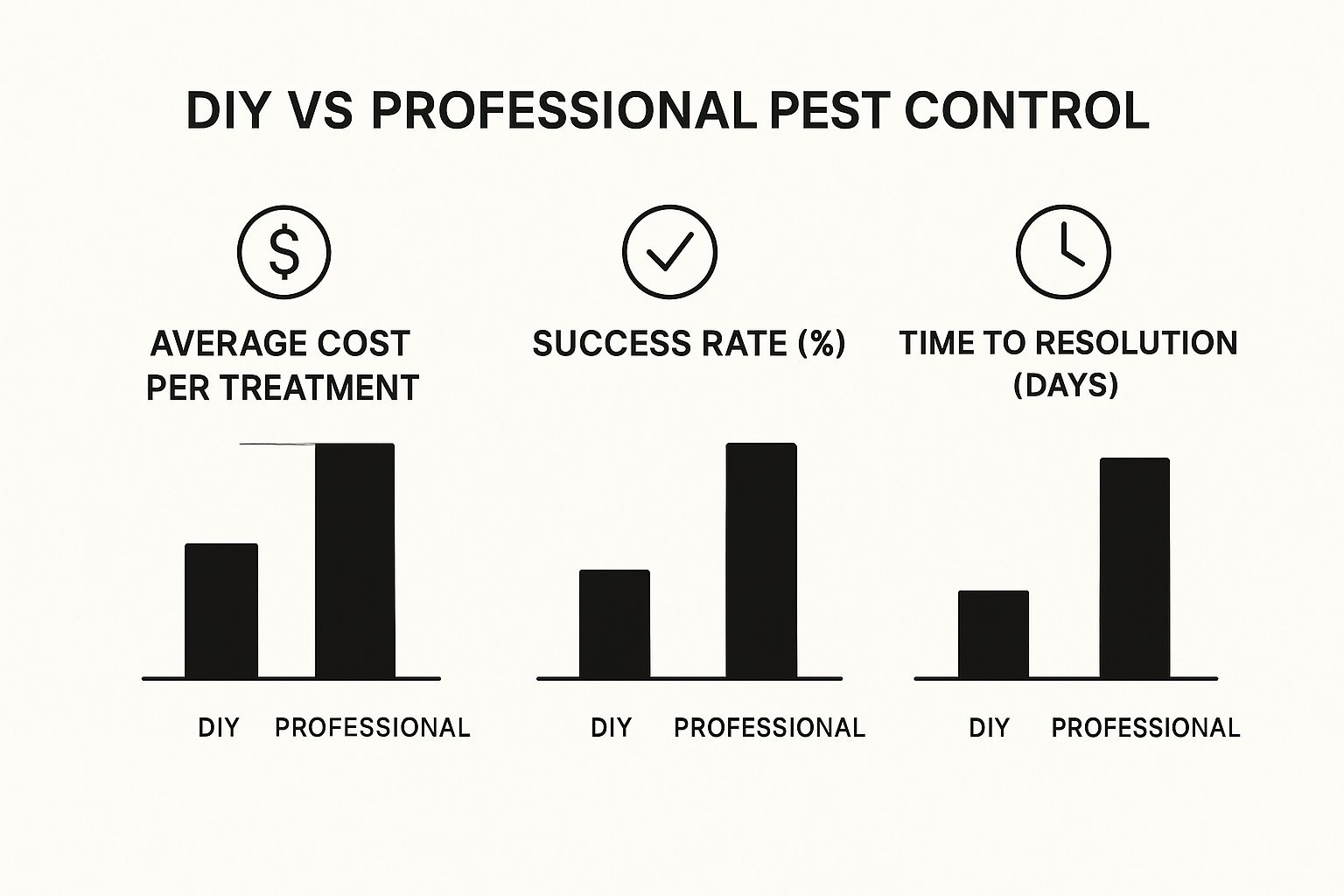
As you can see, professional services deliver a much higher success rate in a fraction of the time, making them a more reliable investment, especially for serious infestations.
Choosing between a DIY fix and hiring a professional can be tricky. Here’s a quick breakdown to help you decide.
DIY vs Professional Pest Control at a Glance
| Aspect | DIY Approach | Professional Service |
|---|---|---|
| Effectiveness | Often only treats visible pests, not the source. Low success for large infestations. | High success rate. Targets the entire pest life cycle and nest. |
| Cost | Lower upfront cost, but can become expensive with repeat treatments. | Higher initial investment, but often more cost-effective long-term. |
| Safety | Risk of improper chemical use, potentially harming family, pets, or property. | Trained and licensed to use products safely and effectively. |
| Time | Can be very time-consuming with a lot of trial and error. | Quick and efficient. Resolves issues much faster. |
| Expertise | Relies on general knowledge. Misidentification of pests is common. | In-depth knowledge of pest biology, habits, and effective treatments. |
| Guarantee | No guarantee of success. The problem may return. | Most services offer a guarantee or follow-up visits to ensure eradication. |
While a DIY approach might seem tempting for a minor issue, for anything more established or complex, a professional service is almost always the better, safer, and more permanent solution.
Why Professional Expertise Matters
The need for expert pest control is on the rise, especially in built-up areas. Increased urbanisation across the UK, with its dense housing and concentrated waste, creates the perfect breeding ground for pests. As our towns and cities grow, so does the habitat for rodents, insects, and other unwanted guests. You can learn more about the market trends driving pest control demand and see why it’s a growing concern.
A professional service isn't a guessing game; it’s a structured, methodical process:
- Inspection: It all starts with a thorough assessment to pinpoint the type of pest, the scale of the infestation, and any weak spots in your property.
- Identification: Getting the species right is critical. A treatment for rats is completely different from one for bed bugs, and a misstep here can render the whole effort useless.
- Treatment: A tailored plan is put into action using the most effective and safest methods for your specific situation.
- Monitoring: The job isn't done after the first visit. Good services include follow-ups to ensure the treatment worked and to put preventative measures in place for the future.
This systematic approach is designed to solve the problem completely, not just push it out of sight for a little while.
The UK's Most Common Pests and Their Risks
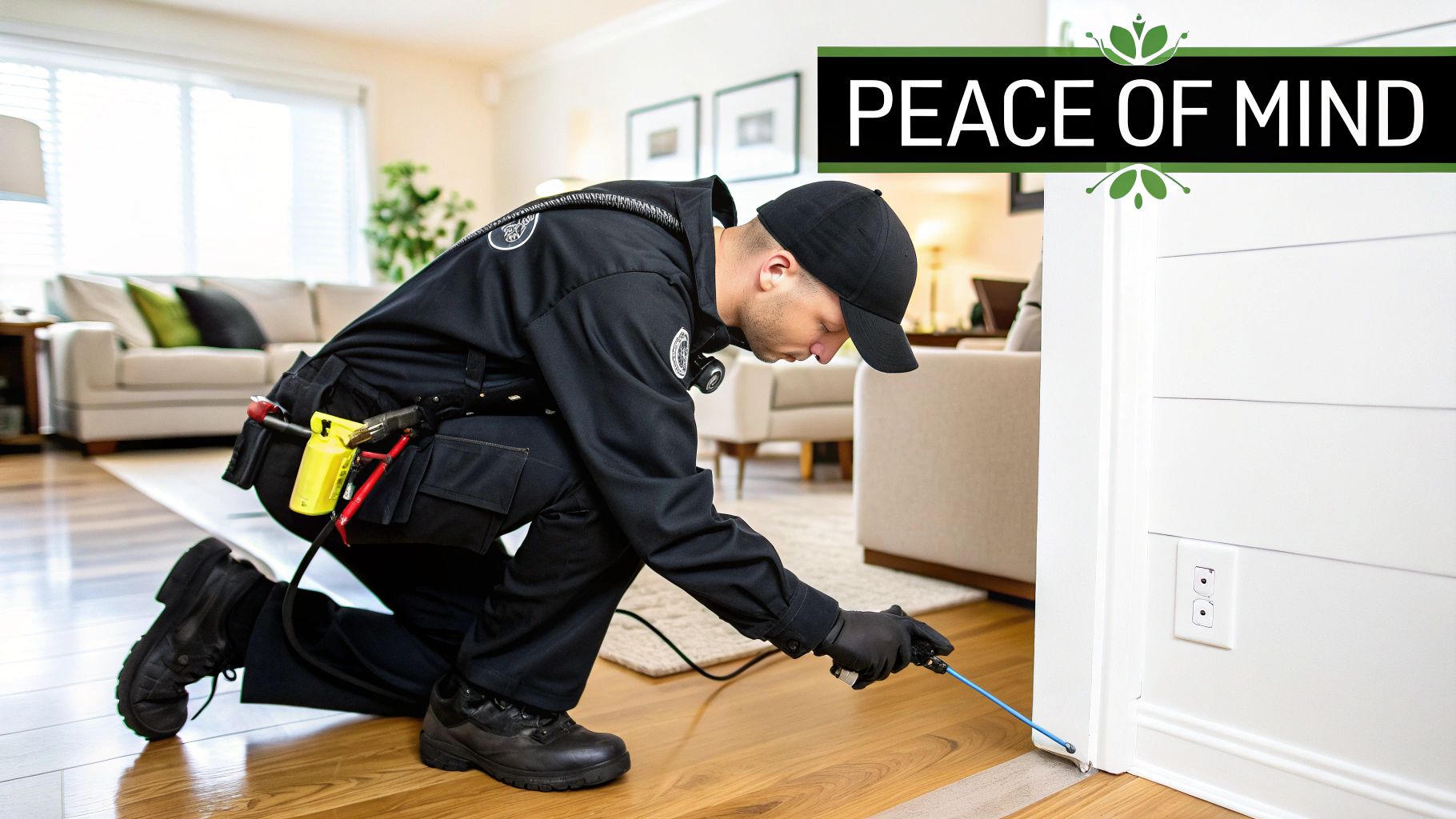
To understand why professional pest control is so essential, you first need to get to grips with the unwelcome visitors themselves. Every pest brings its own unique set of problems, from subtle damage that goes unnoticed for months to serious risks to your health. Knowing what you're up against is always the first step.
Here in the UK, we generally deal with three main categories of pests: rodents, insects, and birds. While they’re all a nuisance, the problems they cause are worlds apart. This is exactly why a one-size-fits-all approach from a spray can rarely solves the issue for good; the treatment has to match the pest.
Let's take a closer look at some of the most common invaders we find in homes and businesses across the country.
Rodents: The Destructive Intruders
When you think "pest," it's probably rats and mice that first spring to mind. And for good reason. Finding one isn't just unsettling; these rodents are incredibly destructive and carry significant health risks that demand immediate, professional attention.
The main problem stems from their teeth. Rats and mice have incisors that never stop growing, so they have a constant, gnawing compulsion to wear them down on anything hard they can find. This includes:
- Electrical Wires: This is a major fire hazard. Chewed wires can easily spark and ignite insulation, timber, or other materials within your walls.
- Wooden Beams and Joists: Over time, their constant gnawing can weaken the structural integrity of your property.
- Pipes and Plumbing: A damaged pipe can quickly lead to leaks, water damage, and some very expensive repair bills.
Beyond the physical damage, rodents are notorious for spreading diseases. They contaminate food and surfaces with their urine and droppings, spreading pathogens like Salmonella and Weil's disease.
Insects: The Silent Invaders
From the bedroom to the kitchen, insects are an incredibly diverse and persistent group of pests. In fact, they make up the single largest chunk of work for UK pest control services, accounting for nearly 39.68% of the market. This demand is often driven by concerns over the diseases they carry. For instance, in 2019, vector-borne illnesses like Lyme disease made up around 17% of infectious diseases in the UK, fuelling the need for professional help.
Here are a few of the main offenders we deal with:
- Bed Bugs: A true homeowner's nightmare. These tiny insects feed on blood while you sleep, leaving behind itchy bites and causing a huge amount of stress and sleepless nights.
- Cockroaches: Thriving in warm, damp places like kitchens and bathrooms, cockroaches are a serious health hazard. They're known to spread bacteria, trigger allergies, and make asthma symptoms worse, especially for children.
- Wasps: A wasp nest on your property isn't just annoying; it's a direct threat. Unlike bees, wasps can sting you over and over again. If their nest is disturbed, they become extremely aggressive, leading to painful and sometimes dangerous encounters. If you're not sure how to handle them, you can learn more about managing wasps and bees safely in our guide.
Pest Birds: The Public Nuisance
While we don't always think of them as pests, certain birds can cause huge problems, especially in towns and cities. Feral pigeons and gulls are the usual culprits, creating headaches for commercial and residential properties alike.
The real problem with pest birds isn't the birds themselves—it's their droppings. Bird guano is highly acidic and can literally eat away at stonework, metal, and other building materials, causing expensive and ugly damage.
On top of that, their nesting materials can block gutters and drains, which often leads to water overflowing and causing structural issues. The droppings also harbour fungal and bacterial diseases, create a dangerous slip hazard, and are a general hygiene nightmare for public spaces, loading bays, and shop fronts. Thankfully, professional pest control services can offer humane and effective bird-proofing to stop them from landing and nesting on your property in the first place.
Understanding Modern Pest Treatment Methods
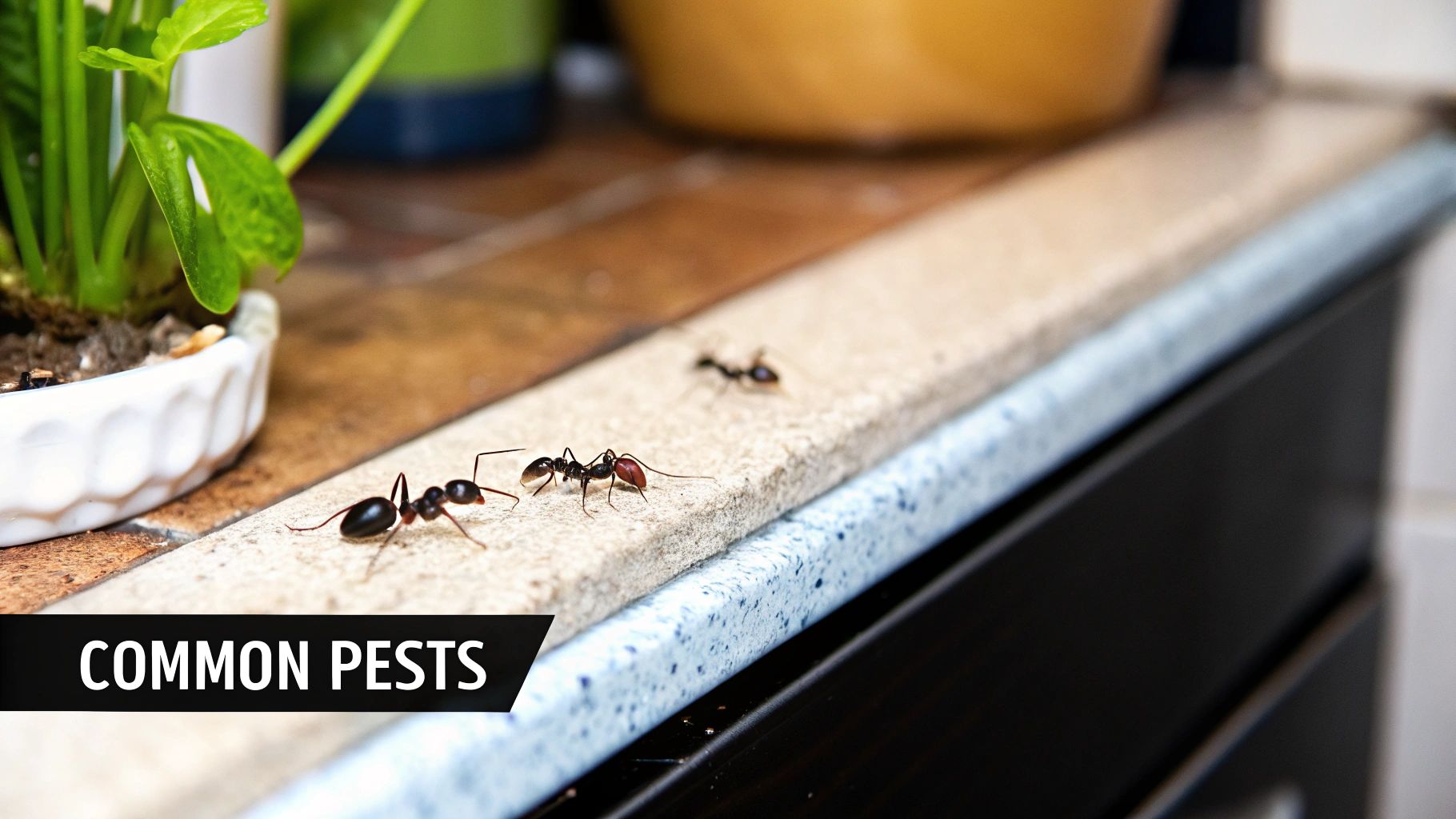
When you call in a professional pest controller, you're getting far more than just a person with a spray can. A technician's van is a bit like a mobile workshop, stocked with specialised tools for very specific jobs. Effective pest control isn't about brute force; it’s about having the right tool and knowing exactly when and how to use it.
Forget the idea of a one-size-fits-all solution. Modern treatments are carefully chosen based on the type of pest, where it’s hiding, and, most importantly, the safety of your family and pets. Generally, these methods fall into three main camps: chemical, biological, and physical.
The best strategies, which we call Integrated Pest Management (IPM), often blend these approaches to create a powerful, lasting solution. Let's break down what a professional might use in your home.
Targeted Chemical Treatments
When people think of pest control, chemicals are usually the first thing that comes to mind. While they're still a vital part of the professional toolkit, the way they're used today is a world away from the old "spray and pray" approach. It's no longer about fogging an entire house.
Instead, we use targeted applications of professional-grade insecticides and rodenticides. These products are applied in precise, controlled amounts right where pests live, breed, and travel. For example, a technician might use a gel bait in the hidden cracks of a kitchen where cockroaches gather, rather than spraying open worktops.
Modern chemicals are designed for maximum impact on the target pest with minimal risk to everything else. Safety is everything, and a qualified technician knows exactly how to apply these treatments so they're effective without endangering children or pets.
Biological And Natural Controls
One of the cleverest ways we manage pests is by using nature to fight nature. This is what we call biological control—using a pest’s natural predators or parasites to keep their numbers down. While it's more common in large-scale agriculture, the principles are making their way into homes and businesses.
More often, you'll see us using naturally derived substances. These include things like:
- Diatomaceous Earth: A fine powder made from fossilised algae. To an insect, it's like walking over broken glass, and it works by dehydrating them on contact.
- Nematodes: These are microscopic worms that we can introduce to garden soil to tackle pests like slugs and vine weevils without harming your plants.
- Pheromone Traps: These use synthetic scents to lure specific insects (like moths or beetles) into a trap. They're great for monitoring an infestation and reducing numbers.
This approach is all about working with the ecosystem, not against it. By using natural processes, we can provide highly effective solutions that rely less on synthetic chemicals.
Physical And Mechanical Methods
Sometimes, the most direct solution is the most effective. Physical methods focus on either removing pests directly or, even better, blocking them from getting in. This is the foundation of any good long-term prevention plan.
This is a broad category that covers a range of hands-on techniques:
- Exclusion: This is just a professional term for pest-proofing a building. We go around finding and sealing every potential entry point, from tiny cracks in the foundation to gaps around pipes.
- Trapping: We've moved far beyond simple snap traps. Professionals use a whole arsenal of devices, from live-capture traps for humane removal to discreet sticky traps that help us monitor insect activity.
- Heat Treatments: This is a seriously powerful, chemical-free method perfect for wiping out pests like bed bugs. By raising the temperature of a room to a lethal level, we can kill pests at every stage of their life cycle—from egg to adult. You can see how experts say goodbye to bed bugs and textile pests with professional heat treatment.
Ultimately, the best pest control services never rely on a single method. A good technician acts like a strategist, assessing the unique situation and combining chemical, biological, and physical tactics to create a custom plan. The goal isn't just to get rid of the current problem, but to make sure it doesn't come back.
The Shift to Eco-Friendly Pest Management
The conversation around pest control is definitely changing. Gone are the days when dousing a problem in harsh chemicals was the only answer. Today, home and business owners are rightly asking for solutions that are not just effective, but also responsible. This wave of environmental awareness is pushing the whole industry towards a much more thoughtful and sustainable way of working.
It’s not just a niche trend, either. The UK pest control market, valued at around £988 million in 2025, is projected to grow by 5.6% annually. A huge part of that growth is driven by public demand for greener pest management. You can dive deeper into the numbers behind this shift and its impact by looking at the UK pest control market growth here.
So, what do we actually mean by "eco-friendly" or "humane" pest control? It’s a shift in mindset. Instead of simply trying to kill pests, the focus is on managing them smartly, with the least possible impact on your family, pets, and the wider environment.
Prevention is the Best Medicine
The absolute cornerstone of any good eco-friendly strategy is being proactive. It’s built on a simple, common-sense idea: the best pest problem is the one you never have. This means making your property as unappealing as possible to uninvited guests.
Rather than waiting for an infestation to take hold, a professional will focus on a few key areas:
- Blocking the Entrances: This is job number one. A technician will meticulously inspect your property for tiny cracks in the foundation, gaps around pipework, or holes in the roofline. To you, they’re minor flaws; to a mouse or an insect, they’re an open invitation.
- Changing the Environment: Pests need three things to set up home: food, water, and shelter. Eco-friendly control is about taking those away. This could mean trimming back overgrown bushes touching the house, making sure your bins are securely sealed, or fixing that dripping outdoor tap.
- Improving Sanitation: A little housekeeping goes a long way. Storing food in airtight containers and keeping things clean and tidy removes the easy meals that attract pests like cockroaches and ants in the first place.
By focusing on these preventative steps, the need for chemical treatments drops dramatically. It's about building a fortress, not constantly fighting battles.
Low-Impact Treatment Choices
Of course, sometimes an infestation is already underway and treatment is unavoidable. When that happens, an eco-friendly approach means choosing methods that are targeted and have the smallest possible environmental footprint. This doesn't make them weaker; it makes them smarter.
A common myth is that "eco-friendly" means "ineffective." The truth is, these methods are often more successful in the long run because they get to the root cause of the problem, rather than just papering over the cracks.
These intelligent strategies often include:
- Non-Toxic and Plant-Based Products: Using baits and repellents made from natural sources, like certain essential oils or diatomaceous earth. These can control insect populations without introducing harsh synthetic chemicals into your home.
- Humane Trapping: For wildlife like squirrels or some birds, live-capture traps are the way to go. These devices safely contain the animal, allowing it to be released away from your property, all in line with UK wildlife laws.
- Strategic Baiting: When rodenticides are needed, they are placed inside secure, tamper-proof bait stations. This is crucial as it ensures only the target pests can get to the bait, protecting children, pets, and other wildlife from accidental poisoning.
Choosing eco-friendly pest control services means you're hiring a professional who thinks like a biologist, not just an exterminator. They use their knowledge of pest behaviour to create clever, sustainable solutions that protect your property and give you peace of mind, without costing the earth.
Breaking Down Pest Control Service Costs
When you're dealing with a pest problem, one of the first questions on your mind is, understandably, "How much is this going to cost?" Understanding what goes into a quote is the key to seeing the true value in professional pest control services.
The final price isn't just a number pulled out of a hat. Think of it like getting a quote from a builder to extend your kitchen versus one for fixing a single roof tile—the scope of the work dictates the price. Pest control is no different. A number of crucial factors come together to determine the complexity of the job and, ultimately, the final cost.
Core Factors That Shape Your Quote
A technician has to consider several moving parts before giving you an accurate estimate. Each factor builds on the others to paint a full picture of the job at hand.
Here are the main elements that will influence your final quote:
- Type of Pest: This is arguably the biggest variable. Tackling a wasp nest is usually a straightforward, one-off job. A widespread bed bug infestation, on the other hand, is a different beast entirely, often needing multiple visits and specialised methods like heat treatments.
- Size of Your Property: It's simple, really. A sprawling country home or a large commercial warehouse has far more places for pests to hide than a two-bedroom flat. More area means more time spent inspecting and more product needed to do the job right.
- Severity of the Infestation: Spotting a single mouse in the garage is a world away from dealing with a well-established rat colony that's taken up residence inside your walls. The bigger and more entrenched the problem, the more intensive the work required to get rid of it for good.
The Cost Breakdown Explained
To give you a clearer idea of how these variables impact the bottom line, here’s a breakdown of the key factors that determine the final price of a pest control service.
| Key Factors That Influence Pest Control Costs |
| :— | :— | :— |
| Cost Factor | Description | Impact on Price |
| Type of Pest | Different pests require different treatments, equipment, and expertise. Rodents, insects, and birds all present unique challenges. | High. Treating bed bugs is far more complex and costly than a simple ant treatment. |
| Infestation Severity | The scale of the problem—from a few pests to a large, established colony—dictates the intensity of the treatment. | High. A major infestation requires more labour, more product, and potentially multiple visits. |
| Property Size & Type | The total area that needs to be inspected and treated, whether it's a small flat, a large house, or a commercial building. | Medium. Larger properties take more time and resources, increasing the overall cost. |
| Number of Treatments | Some issues can be resolved in a single visit, while others (like rats or bed bugs) require a follow-up or a multi-stage plan. | Medium. A one-off visit will cost less upfront than a course of three treatments. |
| Accessibility | How easy it is for technicians to access the infested areas, such as lofts, wall cavities, or under decking. | Low to Medium. Difficult-to-reach areas may require more time or specialised equipment. |
| Service Type | Whether you opt for a one-time reactive treatment or a long-term preventative contract with regular inspections. | Variable. A contract has a higher annual cost but often provides better long-term value. |
Ultimately, a large house with a severe cockroach problem will naturally command a higher price than a small flat with a minor ant issue. It all comes down to the resources needed to solve your specific problem effectively.
One-Off Visit vs. an Ongoing Contract
Another thing that shapes the cost of pest control services is whether you need a one-off, reactive visit or a proactive, ongoing contract.
Choosing between a one-off treatment and a service contract is like deciding between an emergency car repair and a regular maintenance plan. One fixes an urgent breakdown; the other prevents future problems and gives you peace of mind.
A one-off visit is perfect for dealing with a specific, isolated problem, like that wasp nest in the garden shed. An ongoing service contract, however, is all about prevention, offering regular inspections and treatments to stop pests before they can get a foothold.
While a contract might seem like a bigger expense at first, it often delivers far better value in the long run. It's an investment in keeping your property pest-free, saving you the stress and higher costs of dealing with a major infestation down the line.
How to Choose the Right Pest Control Company
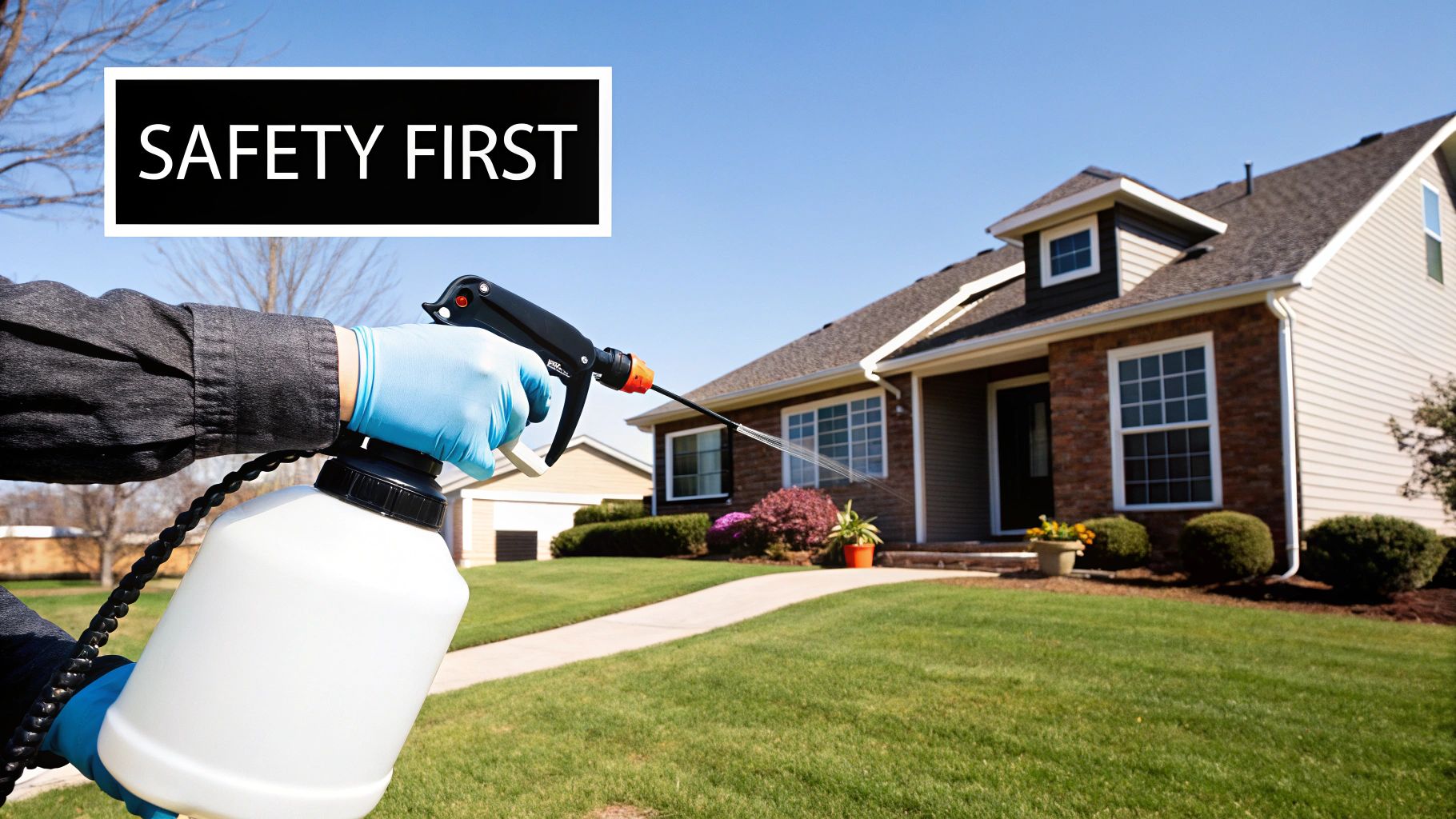
When you’ve got a pest problem, choosing the right company is the single most important step you can take to reclaim your home or business. It’s easy to get distracted by flashy adverts, but with a bit of know-how, you can find a truly reliable expert. Think of it less like a panicked purchase and more like hiring a specialist to protect your property and your health.
The quality of pest control services varies wildly, so doing your homework is vital. A little research now will save you from ineffective treatments, endless repeat visits, and a whole lot of stress down the line. A trustworthy provider will be transparent, knowledgeable, and put your safety first.
Your Essential Checklist for Vetting Providers
Before you even pick up the phone, it’s worth creating a shortlist and running each company through this essential checklist. Ticking these boxes is the best way to filter out the amateurs and find the real professionals.
- Verify Their Credentials: Are they a member of a recognised trade body? Look for membership in the British Pest Control Association (BPCA). This isn't just a fancy logo; it means they are held to a high standard of training, safety, and professionalism.
- Check Their Insurance: Any reputable company must have Public Liability Insurance. This protects you and your property if something goes wrong during the treatment, which is rare but essential to be covered for. Don't be shy about asking to see proof.
- Read Recent Reviews: Look beyond the hand-picked testimonials on their website. Check independent sites like Google or Trustpilot for recent, detailed reviews. This gives you an unfiltered look at what real customers have experienced.
Getting these basic checks out of the way helps you build a list of credible, accountable companies you can actually trust to work in your home or business.
Questions You Must Ask Before Hiring
Once you have a few vetted candidates, it’s time to make some calls. How they handle your questions will tell you everything you need to know about their expertise and customer service.
-
What’s your experience with my specific pest? A company might be fantastic at removing a wasp nest but have limited experience with a complex bed bug job. You need to know they have a proven track record of solving the exact problem you’re facing.
-
What are your treatment methods and are they safe? Ask them to walk you through their proposed approach. More importantly, ask about safety protocols for children and pets. A true professional will confidently explain the steps they take to keep everyone safe.
-
Do you offer a guarantee? Reputable providers often guarantee their work. This could mean free follow-up visits if the pests return within a certain timeframe. Understanding their policy on this gives you peace of mind and shows they have confidence in their own service.
A professional pest controller should be able to answer these questions clearly and without hesitation. If they sound vague or dismissive, that’s a major red flag. This first conversation is your best way to gauge their expertise.
Making the right choice ensures you get a lasting solution, not just a temporary fix. Whether you need help at home or at your business, a good company provides both treatment and education, offering advice on how to prevent future issues. Exploring a provider’s full range of residential and commercial pest control services can also give you a better sense of their capabilities.
Follow these steps, and you can hire with confidence, knowing you’ve chosen a partner who will get the job done right.
Got Questions? Here Are the Answers
Even after digging into the details of professional pest control, it’s completely normal to have a few questions left over. To help you feel confident in your decision, we’ve put together answers to some of the most common things people ask us.
How Quickly Can You Get Here?
When you’ve found a wasp nest or heard scratching in the walls, this is usually the first thing on your mind. For urgent problems like these, most professional companies, including us, aim to provide a same-day or next-day service.
For less immediate issues, like a general inspection or ongoing prevention, we can typically schedule an appointment within a few days. It really depends on the time of year—summer is peak season for pests like wasps, so demand can be high. It’s always best to call as soon as you spot a problem. The quicker a technician can get on-site, the faster and easier it is to sort things out.
Are Your Treatments Safe for My Family and Pets?
Absolutely. This is our top priority, and for any reputable pest controller, it’s non-negotiable. Modern professional treatments are designed to be incredibly precise, targeting the specific pest while minimising any risk to your family, your pets, and other non-target wildlife.
We rely on several key safety protocols:
- Targeted Application: Forget about spraying chemicals all over your living room. We apply products directly into the cracks, crevices, and wall voids where pests hide and travel.
- Secure Bait Stations: If we need to use rodenticides, they are always placed inside tamper-proof bait boxes that children and pets can't open.
- Clear Instructions: Your technician will always walk you through what’s been done and give you clear, simple guidance, like keeping a pet out of a treated room for a couple of hours, just to be extra safe.
Our goal is twofold: solve your pest problem and protect your household. We'll always discuss safety measures with you before we start any work.
How Long Until the Pests Are Gone?
The time it takes to see results really hinges on the pest we're dealing with and the treatment we use. If you have a wasp nest, for example, the results are almost instant. But for pests that live in large, hidden colonies—like ants, cockroaches, or rodents—it takes a bit of time for the treatment to work its way through the entire population.
You might even see a brief spike in pest activity right after we visit. This is completely normal! It just means we’ve disturbed them from their hiding spots and the treatment is starting to work. Generally, you should notice a major drop in activity within a few days to a week. For more stubborn infestations, follow-up visits are often part of the plan to ensure they’re gone for good.
At Pest Predators Limited, we bring together scientific know-how and real-world experience to deliver pest control that’s both effective and responsible. If you have more questions or need to book a visit, get in touch today. https://www.pestpredatorslimited.co.uk
Article created using Outrank
